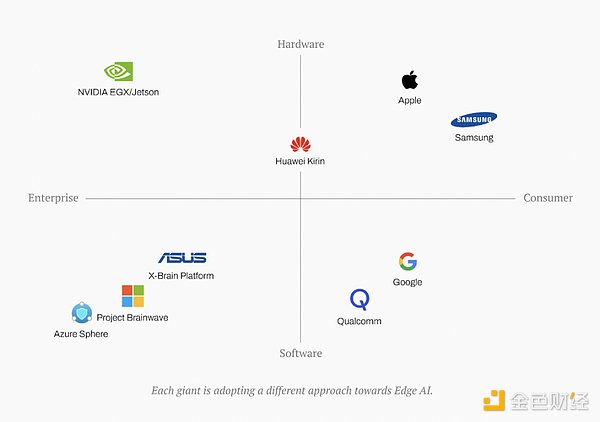Written by Advait Jayant, Matthew Sheldon, Sungjung Kim and Swastik Shrivastava
Translated by BeWater
With the recent launch of Meta’s lightweight Llama 1B and 3B parameter models optimized for on-device application scenarios, and Apple Intelligence will also release its new product at the end of October, we believe that edge AI and on-device AI will become the biggest topics in 2025.
Peri Labs and BeWater collaborated to release a 250-page report covering:
The necessity of edge AI
Core innovations in the field of edge AI
Why edge AI needs encryption technology
The core framework for understanding edge AI
The current status of edge AI and encryption technology
BeWater has translated this report into Chinese, and the highlights are as follows:
The rise of edge AI
Edge AI Edge AI is revolutionizing the field of artificial intelligence by moving data processing from centralized cloud servers directly to local devices. This approach addresses the limitations of traditional AI deployments, such as high latency, privacy issues, and bandwidth limitations. By enabling real-time data processing on devices such as smartphones, wearables, and IoT sensors, edge AI reduces response times and keeps sensitive information securely on the device itself. Technological advances in hardware and software have made it possible to run complex AI models on resource-constrained devices. Innovations such as dedicated edge processors and model optimization techniques make on-device computing more efficient without significantly affecting performance. Point 1: The rapid growth of AI has outpaced Moore's Law. Moore's Law states that the number of transistors on a microchip doubles approximately every two years. However, the growth of AI models has outpaced the improvement of hardware, resulting in a widening gap between computing demand and supply. This gap makes the co-design of hardware and software essential.

Key Point 2: Major industry giants are increasing their investment in edge AI and adopting different strategies.
Major industry giants have invested heavily in edge AI, recognizing that it can revolutionize fields such as healthcare, autonomous driving, robotics, and virtual assistants by providing instant, personalized, and reliable AI experiences. For example, Meta recently released a model optimized for edge devices, and Apple Intelligence will also release its edge AI technology at the end of October.

The intersection of edge AI and cryptography
Key Point 3: Blockchain provides a secure, decentralized trust mechanism for edge AI networks
Blockchain ensures data integrity and tamper resistance through its immutable ledger, which is particularly critical in a decentralized network composed of edge devices. By recording transactions and data exchanges on the blockchain, edge devices can securely authenticate and authorize operations without relying on centralized institutions.
Key Point 4: Cryptoeconomic incentives promote resource sharing and capital expenditures
Deploying and maintaining edge networks requires a lot of resources. Cryptoeconomic models or token incentives can support the construction and operation of the network by providing token rewards to encourage individuals and organizations to contribute computing power, data, and other resources.
Point 5: DeFi model promotes efficient allocation of resources
By introducing concepts such as staking, lending, and liquidity pools in DeFi, edge AI networks are able to establish a market for computing resources. Participants can provide computing power by staking tokens, lend excess resources, or contribute to shared pools to obtain corresponding rewards. Smart contracts automate these processes, ensuring that resources are fairly and efficiently allocated based on supply and demand, and implementing dynamic pricing mechanisms in the network.
Point 6: Decentralization of trust
In a decentralized network of edge devices, it is a challenge to establish trust without central supervision. In encrypted networks, trust is achieved through mathematical means; this trust based on computation and mathematics is the key to enabling trustless interactions, which is not yet available in AI.
Future Outlook
Looking forward, there are still a lot of innovation opportunities in the field of edge AI. We will see edge AI become an integral part of our lives in many application scenarios, such as hyper-personalized learning assistants, digital twins, self-driving cars, collective intelligence networks, and emotional AI companions. We are excited about the future!
 JinseFinance
JinseFinance
 JinseFinance
JinseFinance JinseFinance
JinseFinance JinseFinance
JinseFinance JinseFinance
JinseFinance JinseFinance
JinseFinance JinseFinance
JinseFinance JinseFinance
JinseFinance JinseFinance
JinseFinance JinseFinance
JinseFinance CryptoSlate
CryptoSlate